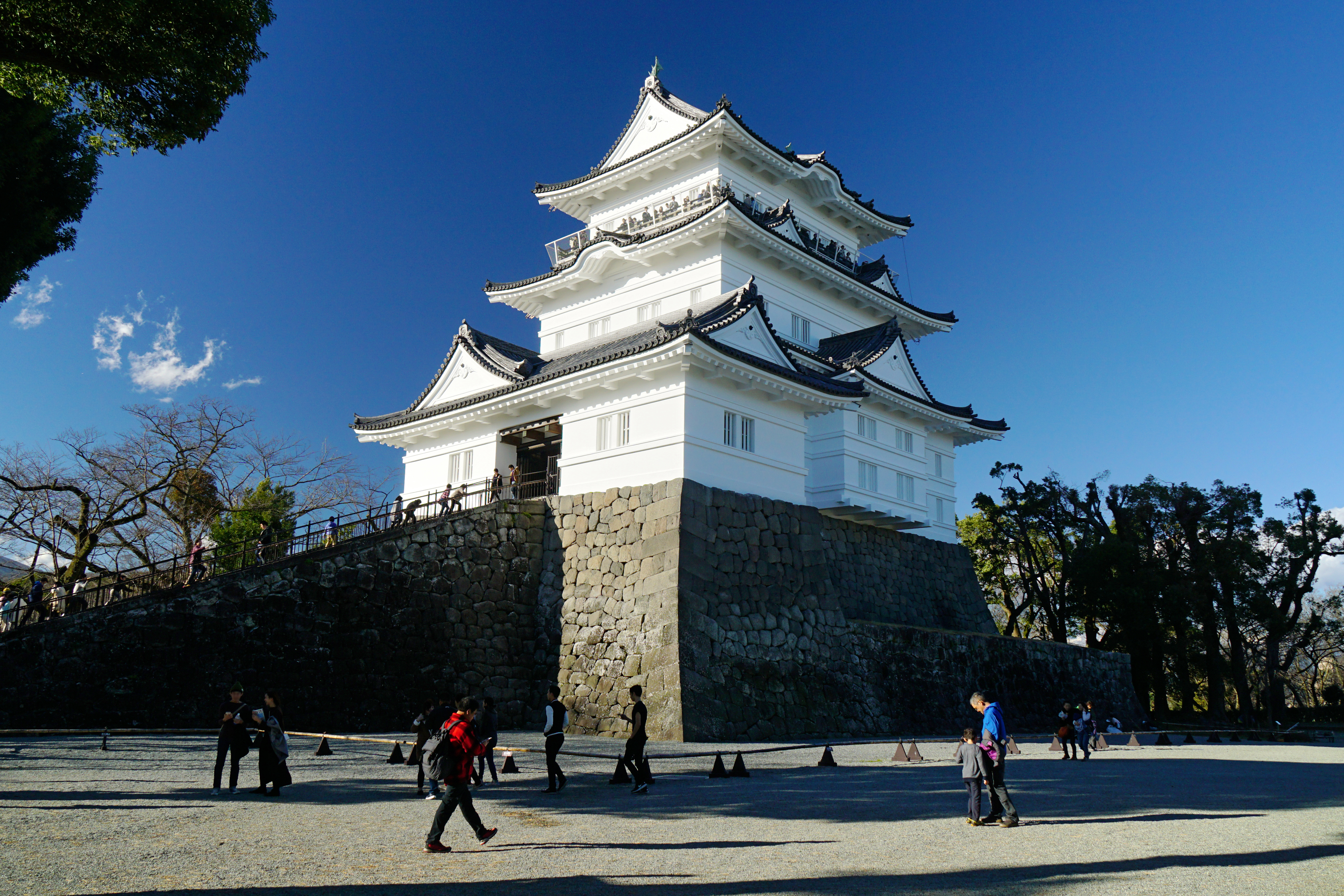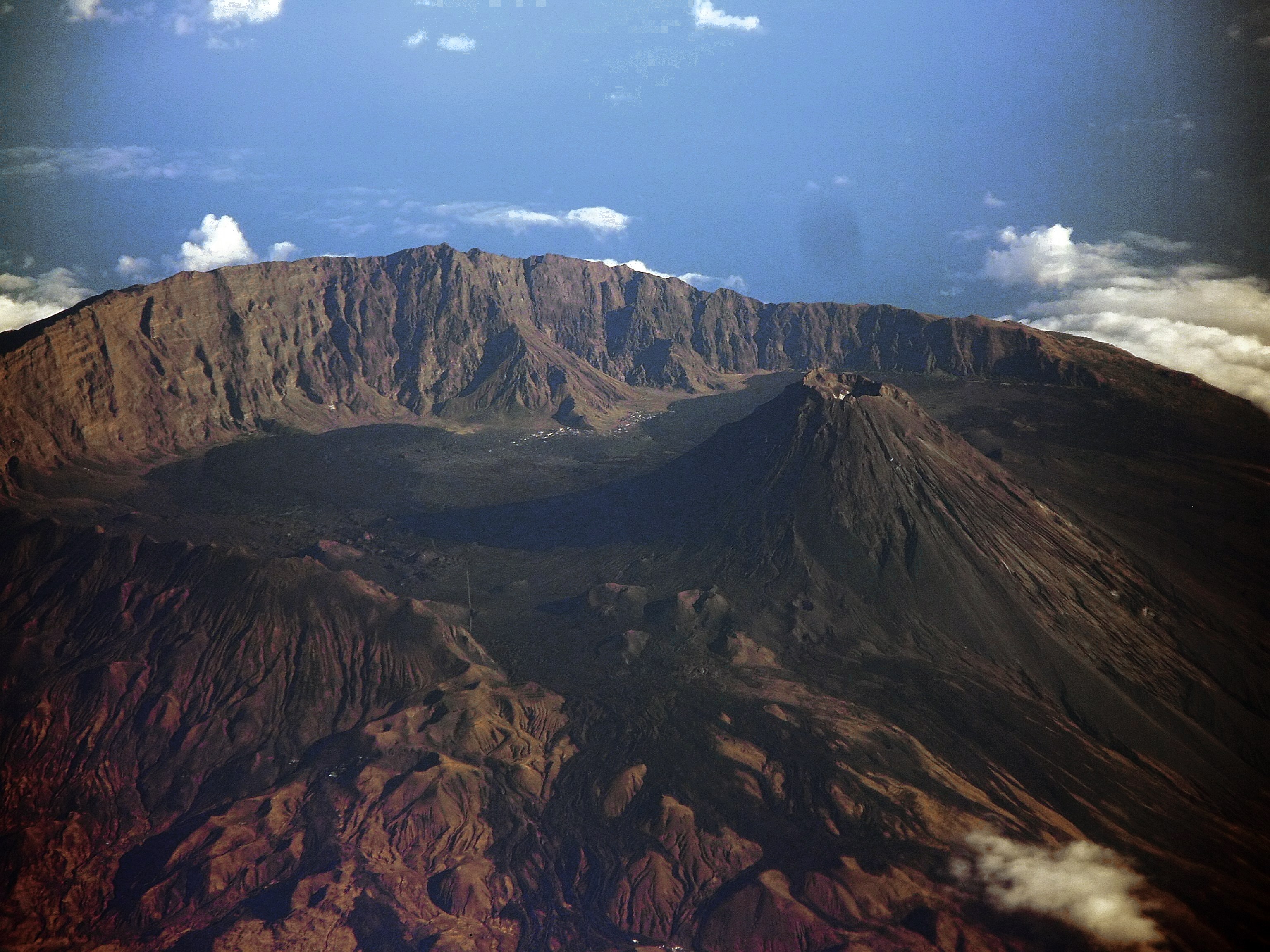|
Mount Myōjō
Mount Myōjō or Myōjōgatake () is a mountain with an altitude of 924 meters on the border of Odawara and Hakone, Kanagawa, as one of the ancient sommas on Mount Hakone's old outer rim. It is part of Fuji-Hakone-Izu National Park. Although it is a low mountain of less than 1,000 meters in Hakone, it looks high from Odawara, with the Evening Star shining above it, so it got its name "Myojo" which means the Evening or Morning Star. The trail from this mountain to Mount Kintoki via Mount Myōjin (Kanagawa) is one of the most popular hiking trails in Mount Hakone In the evening of August 16th, the last day of the annual Bon Festival, the Burning of the Character Big The Burning of the Character "Big" (大), also known as Daimonjiyaki () or Daimonji Festival is the Japanese Buddhism, Japanese Buddhist ritual of burning wood in the character "Big" (大), typically in the mountain, on the last day of the 4-day B ... ritual ( :ja:大文字焼き) is conducted on Mount Myōjin, ... [...More Info...] [...Related Items...] OR: [Wikipedia] [Google] [Baidu] |
Hakone Myoujougatake01
is a town in Kanagawa Prefecture, Japan. , the town had a population of 11,293 and a population density of 122 persons per km². The total area of the town is . The town is a popular tourist destination due to its many hot springs and views of Mount Fuji. Geography Hakone is located in the mountains in the far west of the prefecture, on the eastern side of Hakone Pass. Most of the town is within the borders of the volcanically active Fuji-Hakone-Izu National Park, centered on Lake Ashi. Surrounding municipalities Kanagawa Prefecture * Odawara * Yugawara * Minami-ashigara Shizuoka Prefecture' * Gotemba *Susono * Mishima * Oyama * Kannami Climate Hakone has a Humid subtropical climate (Köppen ''Cfa'') characterized by warm summers and cool winters with light to no snowfall. The average annual temperature in Hakone is 13.3 °C. The average annual rainfall is 2221 mm with September as the wettest month. The temperatures are highest on average in August, at around ... [...More Info...] [...Related Items...] OR: [Wikipedia] [Google] [Baidu] |
Odawara, Kanagawa
is a city in Kanagawa Prefecture, Japan. , the city had an estimated population of 188,482 and a population density of 1,700 persons per km2. The total area of the city is . Geography Odawara lies in the Ashigara Plains, in the far western portion of Kanagawa Prefecture at the southwestern tip of the Kantō region. It is bordered by the Hakone Mountains to the north and west, the Sakawa River to the east, and Sagami Bay of the Pacific Ocean to the south. Surrounding municipalities Kanagawa Prefecture * Minamiashigara * Ninomiya * Ōi, Kaisei, Nakai *Hakone, Hakone, Manazuru, Yugawara Climate Odawara has a humid subtropical climate (Köppen ''Cfa'') characterized by warm summers and cool winters with light to no snowfall. The average annual temperature in Odawara is 13.4 °C. The average annual rainfall is 2,144 mm with September as the wettest month. The temperatures are highest on average in August, at around 24.2 °C, and lowest in January, at around 2.9& ... [...More Info...] [...Related Items...] OR: [Wikipedia] [Google] [Baidu] |
Hakone, Kanagawa
is a town in Kanagawa Prefecture, Japan. , the town had a population of 11,293 and a population density of 122 persons per km². The total area of the town is . The town is a popular tourist destination due to its many hot springs and views of Mount Fuji. Geography Hakone is located in the mountains in the far west of the prefecture, on the eastern side of Hakone Pass. Most of the town is within the borders of the volcanically active Fuji-Hakone-Izu National Park, centered on Lake Ashi. Surrounding municipalities Kanagawa Prefecture *Odawara *Yugawara * Minami-ashigara Shizuoka Prefecture' *Gotemba * Susono *Mishima * Oyama *Kannami Climate Hakone has a Humid subtropical climate (Köppen ''Cfa'') characterized by warm summers and cool winters with light to no snowfall. The average annual temperature in Hakone is 13.3 °C. The average annual rainfall is 2221 mm with September as the wettest month. The temperatures are highest on average in August, at around 24.0 ... [...More Info...] [...Related Items...] OR: [Wikipedia] [Google] [Baidu] |
Somma
A somma volcano (also known as a sommian) is a volcanic caldera that has been partially filled by a new central cone. The name comes from Mount Somma, a stratovolcano in southern Italy with a summit caldera in which the upper cone of Mount Vesuvius has grown. A number of Earth's best examples of somma volcanoes are found on Russia's Kamchatka Peninsula and the Kuril Islands that stretch south from Kamchatka to Hokkaidō (Japan). Some examples of somma volcanoes are the following: * Africa ** Pico do Fogo ( Fogo Island, Cape Verde) ** Teide (Tenerife, Canary Islands, Spain) * Americas ** Cosigüina (Chinandega, Nicaragua) ** Wizard Island (Oregon, United States) ** Lava domes (Mount St. Helens, Washington, United States) * Asia ** Ebeko (Paramushir Island, Kuril Islands, Russia) ** Gunung Baru Jari (Segara Anak caldera, Lombok, Indonesia) ** Kolokol Group: Kolokol, Berg, Borzov, Trezubetz (Urup Island, Kuril Islands, Russia) ** Anak Krakatoa (Krakatoa archipelago, Sunda Strait, ... [...More Info...] [...Related Items...] OR: [Wikipedia] [Google] [Baidu] |
Mount Hakone
, with its highest peak Mount Kami (1,438 meters), is a complex volcano in Kanagawa Prefecture, Japan that is truncated by two overlapping calderas, the largest of which is 10 × 11 km wide. The calderas were formed as a result of two major explosive eruptions about 180,000 and 49,000–60,000 years ago. Lake Ashi () lies between the southwestern caldera wall and a half dozen post-caldera lava domes that arose along a southwest–northeastern trend cutting through the center of the calderas. Dome growth occurred progressively to the south, and the largest and youngest of them, Mount Kami, forms the high point of Hakone. The calderas are breached to the east by the Haya River canyon. Mount Ashigara is a parasitic cone. The latest magmatic eruptive activity at Hakone occurred 2,900 years ago. It produced a pyroclastic flow and a lava dome in the explosion crater, although phreatic eruptions took place as recently as the 12–13th centuries AD. According to the nea ... [...More Info...] [...Related Items...] OR: [Wikipedia] [Google] [Baidu] |
Fuji-Hakone-Izu National Park
is a national park in Yamanashi, Shizuoka, and Kanagawa Prefectures, and western Tokyo Metropolis, Japan. It consists of Mount Fuji, Fuji Five Lakes, Hakone, the Izu Peninsula, and the Izu Islands. Fuji-Hakone-Izu National Park covers . Rather than being a specific spot, the park is a collection of dispersed tourist sites that dot the region. The farthest point south, the isle of Hachijō-jima, is several hundred kilometers from Mount Fuji. The park includes a variety of geographic features including natural hot springs, coastlines, mountainous areas, lakes, and more than 1000 volcanic islands. Vegetation in the park ranges from species of mountainous trees to the subtropical vegetation of the Izu Islands. Fuji-Hakone-Izu National Park was established on February 2, 1936, as Fuji-Hakone National Park, and is one of the first four national parks established in Japan. In 1950, the Izu islands were added to the park, and its name changed to its present designation. Due to its prox ... [...More Info...] [...Related Items...] OR: [Wikipedia] [Google] [Baidu] |
Venus
Venus is the second planet from the Sun. It is sometimes called Earth's "sister" or "twin" planet as it is almost as large and has a similar composition. As an interior planet to Earth, Venus (like Mercury) appears in Earth's sky never far from the Sun, either as morning star or evening star. Aside from the Sun and Moon, Venus is the brightest natural object in Earth's sky, capable of casting visible shadows on Earth at dark conditions and being visible to the naked eye in broad daylight. Venus is the second largest terrestrial object of the Solar System. It has a surface gravity slightly lower than on Earth and has a very weak induced magnetosphere. The atmosphere of Venus, mainly consists of carbon dioxide, and is the densest and hottest of the four terrestrial planets at the surface. With an atmospheric pressure at the planet's surface of about 92 times the sea level pressure of Earth and a mean temperature of , the carbon dioxide gas at Venus's surface is in the ... [...More Info...] [...Related Items...] OR: [Wikipedia] [Google] [Baidu] |
Mount Kintoki
Mount Ashigara (足柄山), also known as Mount Kintoki (金時山), is the northernmost peak of the Hakone caldera, on the border of Kanagawa and Shizuoka prefectures, in the Fuji-Hakone-Izu National Park in Japan Japan ( ja, 日本, or , and formally , ''Nihonkoku'') is an island country in East Asia. It is situated in the northwest Pacific Ocean, and is bordered on the west by the Sea of Japan, while extending from the Sea of Okhotsk in the north .... Ashigara is not a remnant of the collapse of the old Hakone volcano itself, but rather a parasitic cone growing from its flank. Mount Ashigara is the legendary birthplace of Kintarō. Etymology The kanji of the mountain's name mean "Leg Handle Mountain", but the written form is '' ateji'', meaning that the kanji were applied phonetically, and not for any symbolic representation of the mountain's characteristics or history. In old songs it is spelled out phonetically as ''asigari'' (阿之賀利) or ''asigara' ... [...More Info...] [...Related Items...] OR: [Wikipedia] [Google] [Baidu] |
Mount Myōjin (Kanagawa)
Mount Myōjin or Myōjin-ga-take () is a mountain with an altitude of 1,169 meters on the border of Minamiashigara, Kanagawa, Minamiashigara and Hakone, Kanagawa, as one of the ancient sommas on Mount Hakone's old outer rim. It is part of Fuji-Hakone-Izu National Park. Mount Myōjin has two major trails from the eastern and western sides, and is the hikers' most popular mountain in the Mount Hakone area, next to Mount Kintoki. There is also a long trail from Mount Myōjō via Mount Myōjin to Mount Kintoki. See also *Fuji-Hakone-Izu National Park References External links {{Mount Hakone Mountains of Kanagawa Prefecture Hakone, Kanagawa Minamiashigara, Kanagawa ... [...More Info...] [...Related Items...] OR: [Wikipedia] [Google] [Baidu] |




